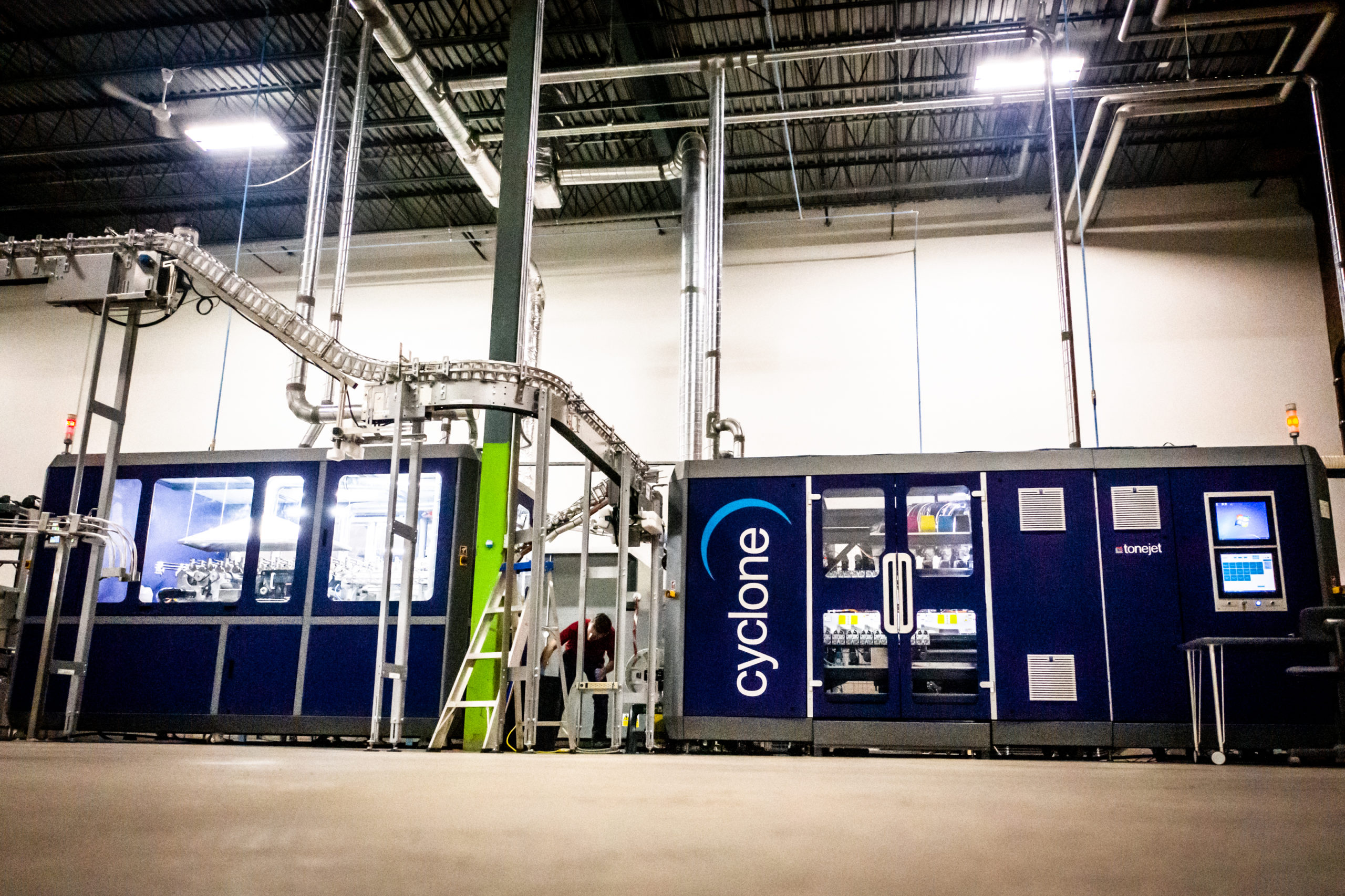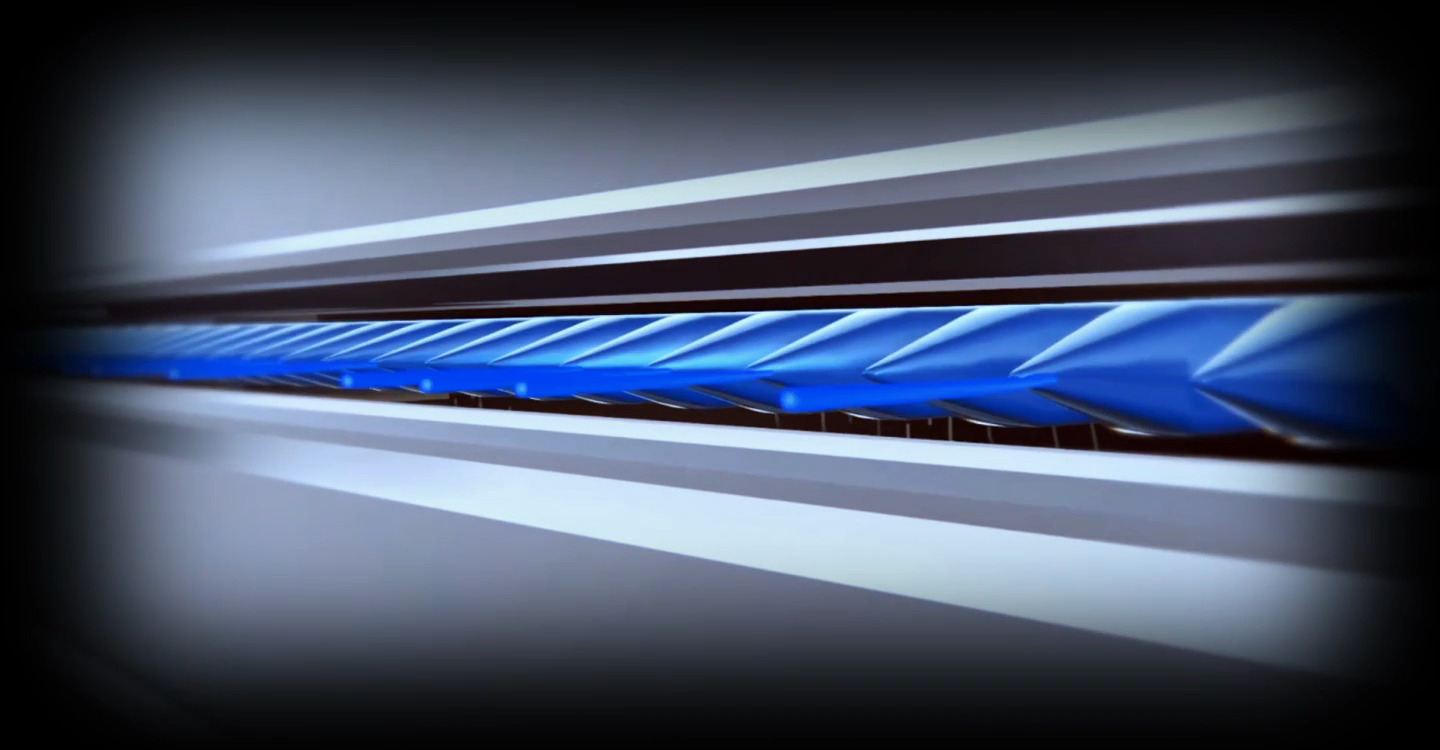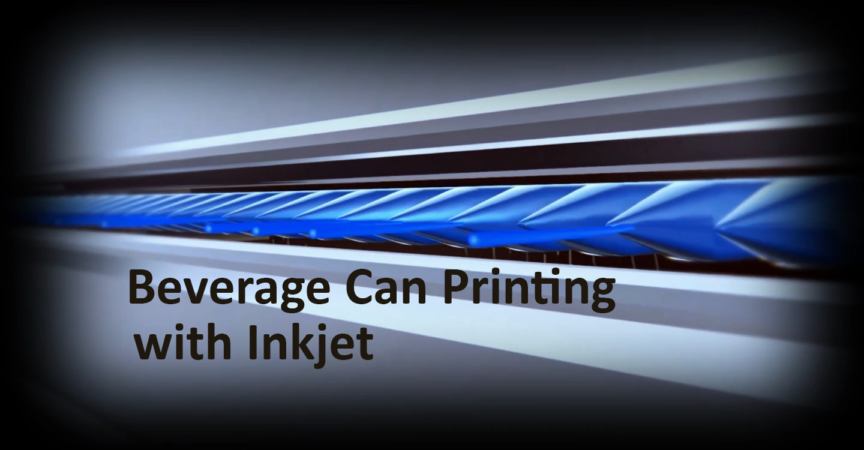In a series of articles we look at inkjet printing technology in several packaging segments. Last time we had a look at the large market for folding carton print – today it is a bit more specialised: beverage can printing.
The beverage can market
As with every prime packaging, the print on a beverage cans is a major factor in branding the product – apart from displaying necessary product information in addition. Like in other markets the trends are pointing towards more elaborate designs, shorter runs and just-in-time production. This is putting conventional print under pressure and is giving rise to digital print.
The trends towards shorter runs is not only driven by the established players in beverages, there are new companies like craft brewers and health drinks that require cans in much smaller amounts. Still nascent is the demand for customised cans (Coca Cola is the famous example) or special event editions, although marketers will surely love these ideas.
Beverage can printing
Beverage can manufacturing is a very concentrated industry. There are four main can manufacturers with about 80 facilities in Europe and the US. The can manufacturers offer print services as well, although they are set up for really large volumes. A run of 100,000 would already be considered a very short run. Also, it will take between three and six months to create printing plates, proof the artwork and set up everything up to delivery.
Obviously, these are large amounts for smaller users. There are a few approaches for short run can printing using digital technology. The choices are using direct to surface printers adapted to cans or using pre-printed sleeves and labels.
Sleeves and labels can be produced on several printers designed for the label and flexible packaging market. They are suitable for short runs, but the extra material transferred and the two-step process does add extra cost. The look & feel of the cans does differ from conventionally printed cans as well, which can be unwelcome.
Inkjet is in use for can printing for many years, like imprinting use-by dates or similar information. More recently inkjet moved into high quality graphics for beverage can printing. Essentially two methods are available today: UV inkjet with direct-to-surface printers adapted for cans and the Tonejet inkjet process, which is specifically addressing can printing.
UV-Inkjet printing
UV inkjet printing started to gain traction in the direct-to-shape printing market approximately in the last 7 years. A range of direct-to-shape printers were announced, some from well-known press manufacturers as Heidelberg and Xerox – others from companies less well-known in the printing industry. Not all devices made it to the market, but installations are slowly increasing. Some of the printers can be adapted to beverage can printing.
For example, Hinterkopf, a manufacturer of packaging machines based in Germany, has already 14 direct-to-shape inkjet printers installed. Some of them are used for printing on cans, not necessarily beverage cans, however.
There are smaller, dedicated beverage can printers available as well. Inkcups is offering a range of can printers. The fastest model prints up to 10 cans per minute, but (as for all models) the final throughput will depend on the image size and resolution. The models offer CMYK and white ink plus optional varnishing. The Helix Hi-Fi model has light cyan and light magenta in addition, for more photorealistic images. All printers use UV-inks. The imaging resolution ranges from 702 x 900 dpi for the top speed model to 1,200 dpi for others.
Even more targeted at test runs and mock-ups is the INX CP800 from the well-known ink manufacturing company INX. The printer has up to 10 color channels, including white. The resolution is up to 1,080 x 1,440 dpi, using Xaar heads and UV inks. The printer produces a can in 4 to 5 minutes in 8-color proof mode.
UV inkjet has proven itself in many printing markets. There are some drawbacks, however. UV inks can be problematic with food applications, as UV inks are usually not safe for direct food contact. The UV inks create a raised printed image as well, which is different from the known feeling of conventional print.
Tonejet and the Cyclone
Tonejet was founded as a technology project within the TTP Group (The Technology Partnership), one of Europe’s leading technology and product development companies, before becoming a wholly owned independent subsidiary some years ago. The company has about 50 employees currently and is based in the UK.
In 2019 Tonejet launched a new printer, actually the company’s first standalone product. Before, Tonejet offered bespoke inkjet imprinting units for can manufacturing and printing lines. These implementations had more an R&D feel and did not give the results and market uptake Tonejet expected.
The Cyclone provides all steps necessary for can printing, from depalletizing to putting the printed can back on pallets. Cans are inspected, cleaned and primed before printing. The line prints about 1 can per second with 600 dpi resolution and variable grey-levels. At the moment the printer is limited to CMYK, but additional colors are planned in the future. Printed cans are varnished, cured in an oven at 200° Celsius and finally put back on pallets – all fully automated.
The complete production line retails at about $2 million. At the moment there is one active customer for the Cyclone: Solucan in Canada. The company is operating the Cyclone for 12 months now and is investing into a second line. The company is still ramping up production with half to ¾ million cans per month and average runs of 10,000 cans. The next Cyclone customer is in the UK however with an installation planned for Q2.

Cyclone installation at Solucan
The Tonejet process
Tonejet is using a distinct inkjet technology, that is neither related to the known continuous inkjet nor piezo or thermal drop-on-demand inkjet. The process was developed in 1990’s by TTP and the Research Labs of Australia.
As a start, the Tonejet process does not need nozzles. Instead in the inkjet head contains a row of tiny ejectors which are covered by ink. By applying an electrical field between an ejector and the substrate a thin filament of ink is drawn towards the substrate, by using electrically charged conventional pigments in a non-conductive carrier fluid. The longer the electric pulse, the more ink is ejected – transferring the charged pigments while most of the liquid stays behind.
Tonejet ink ejectors

90% of the carrier fluid evaporates or is left behind at the ejection of the droplet, transferring a highly concentrated amount of pigment. A short drier evaporates the small amount of solvent transferred to the can. The ink is not dry yet, however. In a further step an overprint varnish is applied via a roller, which contains the necessary binders. This overprint varnish is the same product used in can manufacturing and conventional offset can printing worldwide. Crosslinking for a stronghold on the can is achieved in a second oven.
For better adhesion a primer is applied to the can before printing. At the moment it is clear, but white will be an option by the middle of 2021.
Compared to other digital printing methods the Tonejet process has some advantages. The smooth untextured look and feel of the ink is akin to traditionally printed cans. The amount of ink transferred is low and the process is fast. Another problem with shrink sleeves and labels is environmental legislation, which is increasingly trying to reduce the use of plastics.
With a typical cost of 2 pence per can the Tonejet process is more expensive than mass produced, conventionally printed cans. Compared to the retail price of a craft drink can the cost is low, however. It also compares favourably against using sleeves or labels which can be in the 5 to 7 pence range.
Building the short run can printing market
Short run printing for beverage cans certainly needs some market development. The very large-scale producers and printers of cans do not have the right business model and production flow for short run printing. Conventional can printers run at 2,000 cans/minute. It feels a bit like convincing a large web offset printer of the potential of short run bespoke printing. Ultimately these companies will want to look at short runs, but since their customers do not have alternatives the pressure is low. Likewise, the logistics of shipping much smaller batches in time will be a challenge as well.
The demand for high quality printing on cans in shorter runs will give rise to new suppliers until the market is mature and established enough for the large producers to enter.
There are a few companies offering digital short run printing, either by printing sleeves for cans or UV-inkjet in very short runs. Those tend to be in general packaging or label markets and offer can printing as an add on. The challenge for those companies will be to generate enough volume to justify dedicated can printers, when sleeves can be produced on existing flex pack or label presses.
Solucan is one of a new breed and has a different approach in being a dedicated can printer. The company saw the market demand and made a targeted investment to serve and develop the market. Other companies with an existing knowledge of craft brewing could follow. Many of these businesses have a background in beverage can wholesaling, or provide contract filling and distribution services to craft brewers.
The ongoing move to web-ordering of packaging goods can help to drive demand. In commercial print online printers did shake up the printing industry and often serve as low cost suppliers for other printers or source products from specialty printers they are not able to produce themselves. These web portals could funnel the demand to printers with the right equipment, without necessarily having to invest themselves.
In the end there are several approaches to get into can printing and some printers are set to profit from the inherent market demand.

